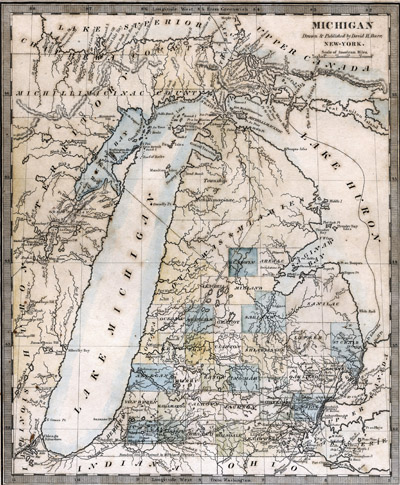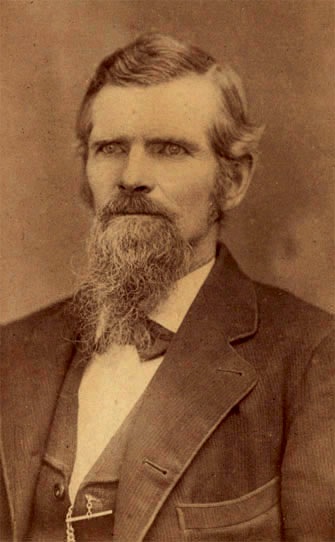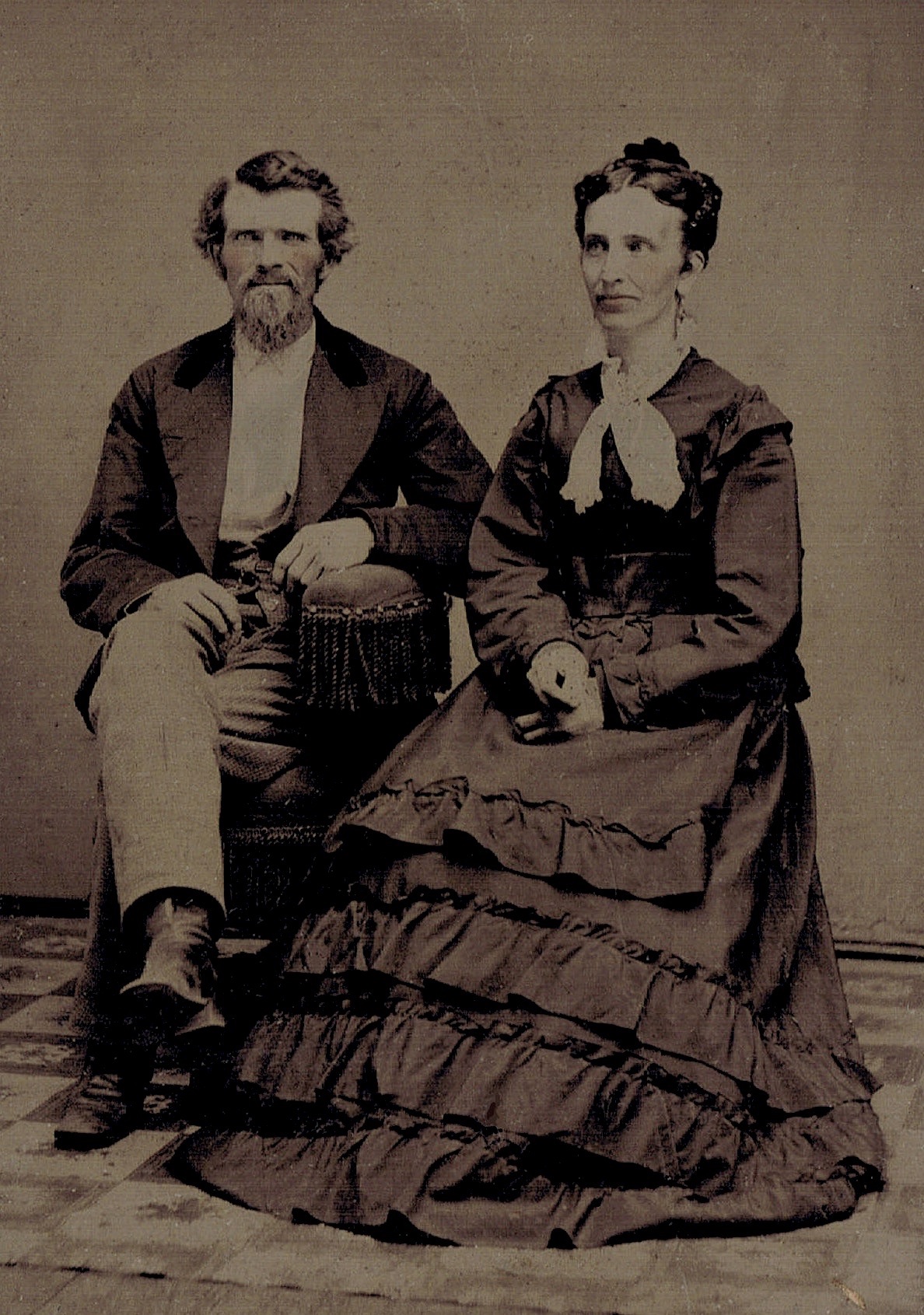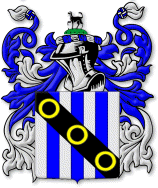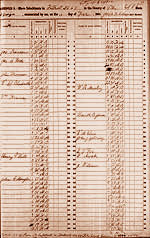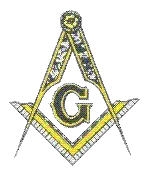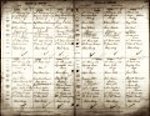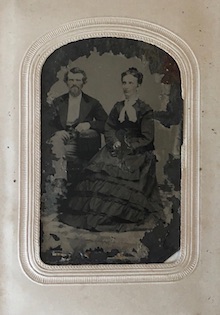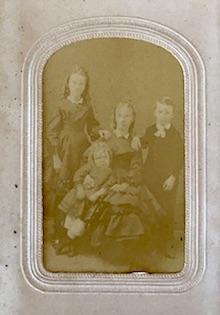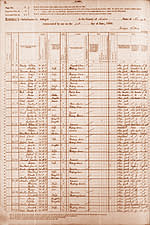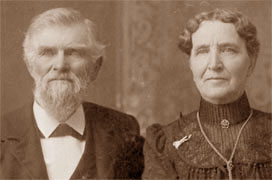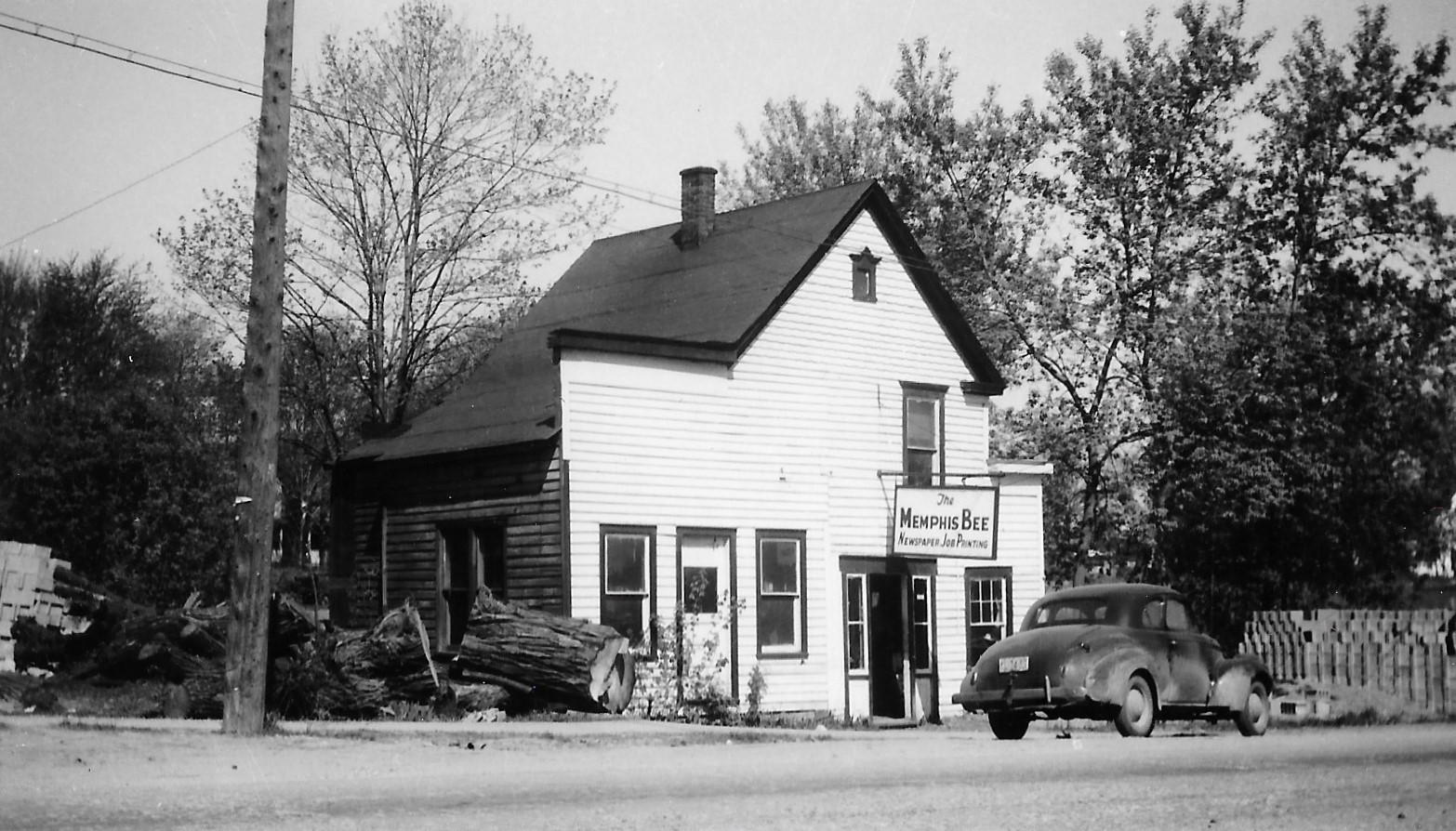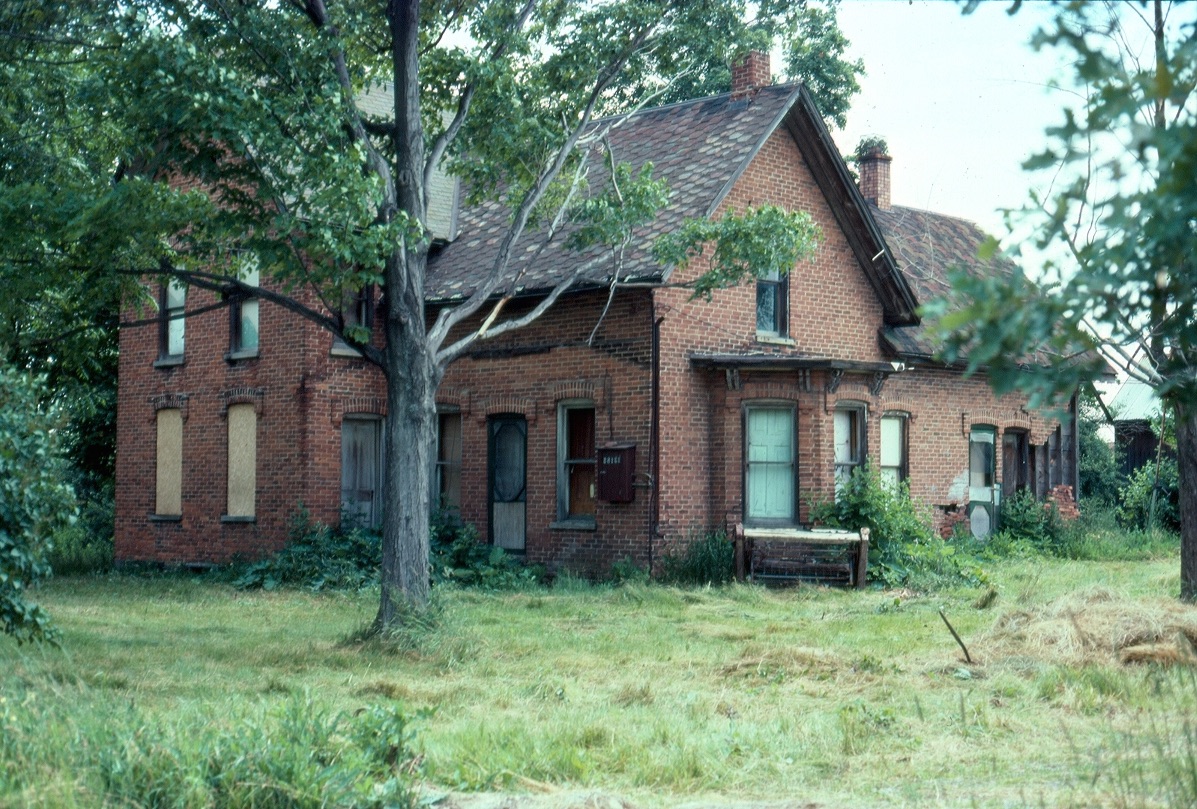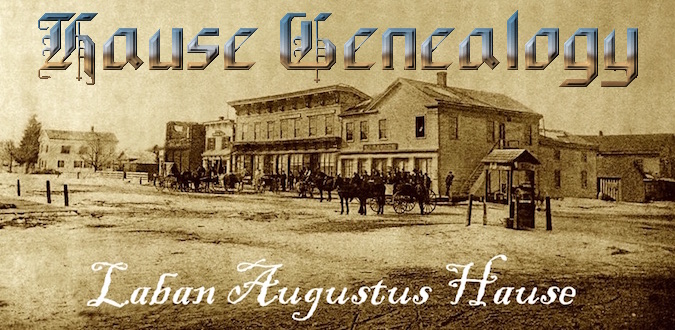 |
"A small settlement grew up, a dam was built across Belle River and a saw mill and grist mill erected ... In 1848 it was felt that a post office was needed and it was necessary to select a name. Considerable discussion arose. Various names were suggested, among others, Belleview, because of Belle River, Riley, because of John Riley, the Indian half breed, after whom the township was named, Birney, in honor of James G. Birney, the anti-slavery propagandist and candidate for the presidency of the liberty party in 1844. Finally the name of Memphis, from the Egyptian city, was suggested and adopted."
—"St. Clair County, Michigan, its history and its people," by William Lee Jenks, 1912.
|
Detroit was actually lost to the British for a time in the War of 1812—when the United States government forgot to notify their frontier posts in Michigan that the country was at war. So when 520 British soldiers crossed St. Mary's River on July 17, they took Fort Michilimackinac without a shot being fired, and then overtook Detroit in August. The United States won Michigan back in the Battle of the Thames in 1813, and started over fresh in the territory.
In 1818, the question of local government was put before the people (those French fur traders), and in what has to be considered the greatest French joke of all time, they held a free election and voted not to vote anymore. From then on, they had no voice in their own government.
Finally, in 1824, a legislative body was established that would be appointed by the people, and the residents of Michigan finally were able to control their own destiny. The Erie Canal opened the next year, which, combined with the beginning of steam navigation on the Great Lakes, brought a surge of settlers, including a few trailblazing Hauses—the first being William E. Hause's youngest sons, Samuel and Morris, in 1830. In January of 1831, mail service began in the state, but it took a fourteen days for a letter to reach Detroit from New York.
Michigan became a state in 1837, after a near-war with Ohio over their respective boundary lines (the prize being Toledo, of all places). Meanwhile, the new government immediately went to work screwing the Indians out of more property, and by 1840 the last Native American land was turned over to the United States, except for a few small, scattered reservations. (It would take 150 years before they could open up gambling casinos on those reservations and start screwing back.)
The nationwide prosperity in the early 1830s gave settlers and speculators money to buy Michigan land, and the population, which was 31,640 in 1830, grew to more than 212,000 by 1840. New York supplied the largest number of Michigan pioneers, and quite a few of those pioneers were in the Hause family.
The next Hause to reach Michigan that we know of was John Hause (spelled "Hauses" in the record), who entered Clinton County in 1836, and reached Detroit by that autumn. This John claimed to be a native of "European Westphalia," so he probably wasn't a direct relation.¹ But Sanford Hause (b. 1805), son of William Hause, Jr., bought 79 acres and opened a tavern in Lenawee County that same year. Soon after, his cousin John Hause II (b. 1812), brother of Augustus, would settle in Bridgewater, Washtenaw, Michigan. The decendants of John and Sanford would even marry, although enough generations had passed so that it isn't clear if they knew they were distant cousins.
|
THE LAWS OF MICHIGAN IN THE 19TH CENTURY: |
|
|
|
But Laban and John had the bright idea of selling that expensive New York land, and using the money to buy more property in an area where the land was cheaper. The plan was to move west and carve out their own place from the wilderness... and the new frontier of Michigan was beckoning.
So in the mid-1850s, John and Laban took their new Dysinger brides, along with their sister Basheba Hause and new cousins-in-law Daniel and Nicholas Dysinger, then headed to the new state with their families—either taking a steamship up the Erie Canal, or by land using teams of oxen or mules, towards the untamed wilderness (read: cheap land).
Expansionism was the word of the day, and our line of the Hause family was moving west again, screaming that word from the mountaintops—if they could find any mountaintops in Michigan. There were no mountains, but there was plenty of flat land, perfect for farming—all you had to do was carve that farm out of the wildnerness, and hope that the local Native Americans didn't mind.
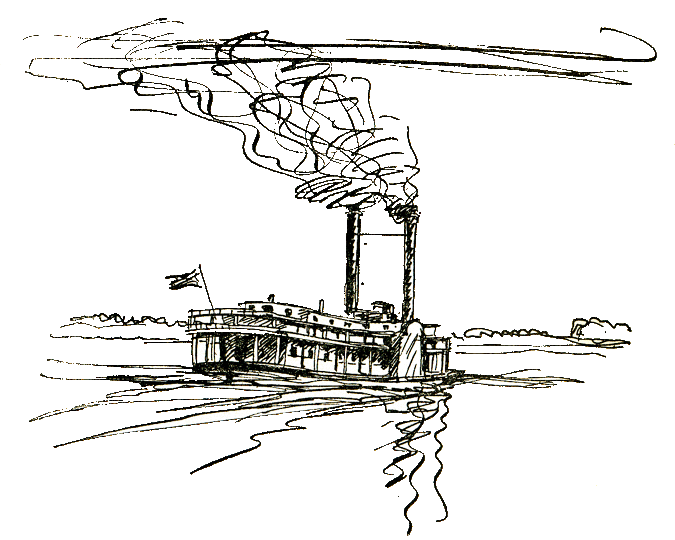
|
|||||||||||||||||||||||||||||
Laban and Sarah then sold the 100 acres of property that she had inherited from her late father in Lockport, for $500. The document was signed by Sarah's mother, Catharine, and accepted by Laban "House" and Sarah in St. Clair county, Michigan. (On the next page in the book of deeds, Catherine sold more of the Lockport land willed to her other children, including Eve Dysinger-Hause.)
The various Hause and Dysinger families then settled in, and even began to grow: County records show that on the 13th of May, 1857, 21 year-old Basheba married Charles H. Oaks, 23, of Riley. The witnesses were "Loban" Hause & John J. Hause, also of Riley; the wedding was performed by Minister William P. Russell.
Living on the edge of the Michigan wilderness left the Hause family far away from doctors, hospitals, and the superior medical attention available back in New York (which in truth wasn't all that great, anyway). There were only ten licensed physicians in all of St. Clair County. They charged from five dollars for minor surgeries, up to a hundred dollars for major ones. There was also a fee of five to twenty-five dollars for midwifery, which Sarah needed in 1857 for the birth of a child:
|
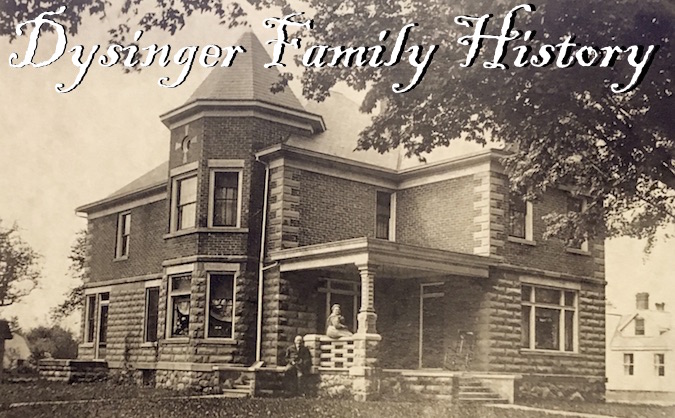
|
Laban was not prepared to raise an infant daughter by himself in the wilds of Michigan. His sister, Basheba, and brother John had settled nearby and probably helped with Elma, but Laban needed a more permanent solution. Like his father Augustus, he wasn't the type to mourn his loss for long—he set about looking for a mother for Elma.
|
|
Laban and Melissa were wed in Riley Center on October 25, 1859. (Laban's previous marriage apparently never bothered the youthful, always-optimistic Melissa—in fact, Laban is today buried between both of his wives in the Memphis Cemetery.
Melissa was a school teacher (in fact she was so bright that she started teaching in Memphis at age 15), and she would change the course of our family history. She brought culture and education to the Hause family. Schooling was always important to Germanic immigrants, but not as much to farmers, which the Hause family had mainly become over the previous 150 years in America. Farmers are more concerned with being able to sell crops than being able to spell them. But after Melissa, the Hauses (at least the men) would all be college-educated (I dropped out of Long Beach State in 1984 to write the film Once Bitten after the producers threatened to can me and hire a full-time screenwriter, thus ending the streak. Sorry, Melissa).
|
The official enumeration day for the 1860 Federal Census was June 1st. There were a total of thirty-three states in the Union, with Minnesota and Oregon being the latest additions. Augustus Hause still remained in New York, listed as a 55-year-old farmer, now married to 35-year-old Fannie Christopher. Augustus Jr., his last child from Jane Jones, still lived at home with him. But Laban has moved to Michigan, as had his children John, Laban and Basheba. John was Justice of the Peace in Riley from 1859-66 (but he would move back to Royalton before 1880). Laban was listed as a farmer, living next to his ex-cousin-in-law Nicholas Dysinger, with $1500 of real estate and $447 in personal estate.
|
Prosperity and security were short-lived: In the early 1860's the Civil War raged throughout the country. But there was no way that Laban could go to war. He was busy trying to start his life again with a new wife, and start a new family (Alice was born in 1861 at the start of the war, and Sarah followed in 1863).
Laban had four children with Melissa, and the family prospered. In fact, period photographs show them in the stylish clothes of the day—always clean, which was rare for the Michigan frontier—if a little stern (although that could just be from having to hold a pose for so long).
|
|
Laban became a Freemason,³ reciting his oath to the Memphis Lodge: "To the high purposes of universal Masonry, to brotherly love, relief and truth, to the upbuilding of this Lodge; the promotion of harmony among its members, to the realization of its highest ideals of character and of life; to the stretching forth of our hands to aid and support a fallen brother, and to the vindication of his character behind his back, as well as before his face, we here and now, pledge anew, our most earnest and unceasing efforts." In fact, he's wearing a Mason pin in the above photo (2nd button down).
There are a great many rumors and myths about freemasonry: That in order to join you must drink wine out of a human skull, and many others. In Niagara County, where Laban grew up, William Morgan was kidnapped in 1826 for threatening to reveal the secrets of Masonry. The Masons of the Lockport Lodge were involved in his disappearance, and although they claimed that he had been released after being held in Fort Niagara, he was never seen again. While the Masons in New York were somewhat controversial, the early Freemasons in Michigan were really a fraternity dedicated to improving the community through work and education. They helped create and fund the University of Michigan, and other important institutions, and the community in Memphis was eager to join in. So on January 14, 1864, the charter was accepted for Mason's Lodge No. 142 in Memphis by the Grand Lodge of Free and Accepted Masons in Michigan. Laban became an apprentice at the lodge in 1874, earned his Fellowcraft Degree, and a Master Mason Degree, all in the same year, and remained active for the next 31 years. He and his son, Frank, were both heavily involved in the organization during their lives, so the Hauses were an integral part of that lodge for the next 75 years.
|
|
||||||||||||||||||||||||||||
In the decade after the Civil War, most men were employed in either the agricultural or manufacturing industries, and the average daily wage was $2.20 (about $43 in today's standards). Laban worked his own land for food, just as his father had always done, but he was looking for something new.
He may have been looking to get away from Memphis, too, as the town was experiencing growing pains. The roads were terrible. The local newspaper read, "I would advise all strangers coming to Memphis after dark to keep in the centre of the street, until they can get a pilot to drive them in safey out of the mud, for the culverts are almost without number, and the deepest mud is the safest place after dark."
Laban became the Postmaster in the township of Emmett, about 7 miles away from Memphis in St. Clair county from 1869 to 1873, but the Hause family never fit in with the community. (It was "too Catholic," according to Laban's grandson Basil—much of our family history had been lost, but our Reformist, anti-Catholic bias was apparently still being handed down.)⁴
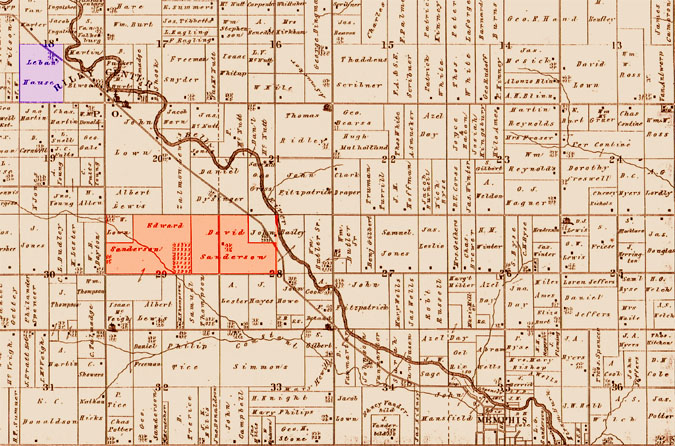 A map of Riley Center in 1876. Laban's property (#18) is in blue, while the farms of father-in-law David Sanderson and brother-in-law, Edward, are in sections 28 and 29. (Enlarge.) |
|
While running the store, Laban supplemented his income by taking boarders. He also put food on the table the same way every Hause man since Johann six generations before him had: farming and hunting. Such was life on the Michigan frontier: It was cold and harsh, and everybody worked at least one job, then scraped and struggled to survive with whatever time they had left over.
Laban did well for himself in this new frontier, and his fortune grew—and Michigan grew right along with it, as forests became farmland and townships became cities in the ensuing decades.
Laban's family also grew. He and Melissa had the following children, who they raised along with Elma:
|
|
|
|
|
|
|
|
|
||||||||||||||||||||||||||||||||||||||||||||
Laban also took up a cause from his dearly-departed father: The Temperance movement. In 1845, Michigan had officially allowed its municipalities to decide whether they were going to prohibit alcohol, which sparked great debate. That issue, along with the abolitionist movement and the women's suffrage movement influenced the Third Great Awakening, spanning the late 1850s to the early 20th century. Methodists like the Hause family believed that despite the supposed economic benefits of liquor traffic such as job creation and taxes, the harm that it caused society through its contribution to murder, gambling, prostitution, crime, and political corruption outweighed its economic benefits. Drunkenness was seen as a sin, and the post-Civil war "gospel" temperance movement formed "ribbon" clubs to support men who declared abstinence. Ribbon reformers traveled throughout the Midwest, sharing their public testimony to convert others. A "Red Ribbon" club was organized in Millington, and on Monday, 12 Mar 1877, fifty-two men signed a pledge, donned a red ribbon, and "dared to do right" as a choir sand "Hold the Fort." Laban was named president of the Millington branch (Detroit Free Press, 14 Mar 1877, page 1).
The Hause family was prospering, but the harsh realities of life on the frontier were always present: In 1881, their daughter Sarah—named after Laban's first wife—married a store clerk named Arthur Baker, a foster child who had been living with Oliver and Mary Gold of Millington. The happy day turned tragic when Sarah ate contaminated beans served at the wedding and became ill. She wasn't considered in a dangerous condition by her doctor, L.C. Davis, but suddenly took a turn for the worse and died within a few hours from Typhoid fever. She is buried today near her mother and father, at a family plot in the Memphis Cemetery.
Needing a change after that peculiar tragedy, Laban gave up the store (they definitely weren't going to be able to sell any more of the canned beans) and returned to Riley Center in 1882, where he built a substantial brick house with a smoke house and barn, at 13185 Belle River Road, near the Sanderson family. This property incorporated the farmland of Melissa's brother, Edward Sanderson. There was a windmill in the back for power and an apple orchard for food, and Laban built a smokehouse nearby to prepare meat for the table. This would be the family's base until the end of the Century.
|
In one of the more macabre anecdotes in our family history, the stone for Sarah Hause's grave was delivered to the new house, but the inscription on the face of the stone was incorrect. Laban refused to pay for it, but the carver refused to take it back. So the stone stayed in the front yard of the Hause family house, until Laban finally made it the stepping-stone to the front door.

|
TITLE PHOTO: The west side of Main Street in Memphis, in 1883. All of the wooden buildings burned down in 1911. The structure at the center of the intersection is a well to water the animals. (Photo courtesy of the Memphis Historical Society; Click to enlarge.)
NOTES ON THIS PAGE:
¹—Past and present of Clinton County, Michigan, by Judge S. B. Daboll, assisted by D. W. Kelley, together with biographical sketches of many of its prominent and leading citizens and illustrious dead. Illustrated. Author: Daboll, Sherman B., 1844-1910; p. 490.
²—The Ojibwe (or Chippewa) are an Anishinaabeg group of Algonquian-speaking Native American bands in North America who amalgamated as a tribe in the 1600's. They were known for their birch bark canoes, birch bark scrolls, and maple syrup. Ojibwe and Chippewa are actually the same Algonquian word, pronounced a little differently due to accent, coming from the root word otchipwa (to pucker), which refers to the distinctive puckered seam of their moccasins. A few bands of Ojibwe lived in Michigan, where they subsisted principally by hunting and fishing, as the climate of the Upper Peninsula was too cool for farming—although in southern Michigan the Ojibwe women cultivated numerous varieties of min-dor-min (corn), manoomin (wild rice), potatoes, turnips, beans, squashes, pumpkins, and melons. Their typical dwelling was the wiigiwaam (wigwam), built either as a waginogaan (domed-lodge) or as a nasawa'ogaan (pointed-lodge), made of birch bark, juniper bark and willow saplings. In 1807, the Ojibwe signed the Treaty of Detroit, giving the United States a portion of today's Southeastern Michigan and a section of Ohio near the Maumee River. The tribes were able to retain small pockets of land in the territory. The Indian Removal Act of 1830 forced many Michigan-based bands of the tribe to move north to Canada. Fortunately there were enough of them still around in the 1850's to help Laban and Sarah survive the winter.
³—No one knows just how old freemasonry is, because the actual origins have been lost over time. Probably, it arose from the guilds of stone masons who built the castles and cathedrals of the Middle Ages. Possibly, they were influenced by the Knights Templar, a group of Christian warrior monks formed in 1118 to help protect pilgrims making trips to the Holy Land. The society's influence is everywhere: Presidents George Washington, James Monroe, Andrew Jackson, James Polk, James Buchanan, Andrew Johnson, James Garfield, William McKinley, Theodore Roosevelt, William Taft, Warren Harding, Franklin D. Roosevelt, Harry Truman, Lyndon Johnson, Gerald Ford, Ronald Reagan and George Bush were all Masons (Bill Clinton was in a freemason youth group). Others included Winston Churchill, Napoleon Bonaparte, Ben Franklin, John Hancock, Paul Revere, Davy Crockett, Walt Disney, Samuel L. Clemens (Mark Twain), most of the Kings of England, the Rothschilds, the Rockefellers, Orville and Wilber Wright, Billy Graham, Jesse Jackson, Mormon Church heads Joseph Smith and Brigham Young, and FBI head J. Edgar Hoover.
|
⁵—The first newspaper in Memphis was the Daily Bug, established in 1877. The name of the paper was later changed to the Memphis Tribune, and again in 1882 it was changed to the Memphis Banner. It was published once a week on Fridays and was sold for $1.00 per year. Next came the Memphis Bee, founded in about 1892 (See the front page from Friday, 25 May 1900 with "F.A. Hause & Co." ad here).
|
LITERARY SOURCES FOR THIS PAGE:
⁶—Commercial photography began around 1840, with the daguerreotype, in which a negative image was printed on a silver coated copper plate. Subjects had to remain absolutely still for 20 minutes or so. (So that's why Laban didn't smile!) Tintypes were invented in 1853 (just in time to record Elnathan Sanderson and Betsey Waters), and were widely used until the 1880s. The process was instantly popular because it was quick, cheap, and durable. At 10-25 cents a picture, they opened up photography to a mass audience who could not afford the formal daguerreotype portraits done up to then. This process used an emulsion layer of collodion and silver, and was produced on a black lacquered sheet of iron—not glass as before (or tin, despite the name). The processing required no drying time and could be delivered to a customer within minutes. As a result, street photographers could set up photography booths and at fairs, carnivals, military enlistment centers, and other large gatherings. With this process, the print would come out laterally reversed (as one sees oneself in a mirror); people either didn't notice and/or care... or just didn't discover it until after the photographer had slipped away!
⁷—The first photographs on paper were patented in Paris by André-Adolphe-Eugène Disdéri in 1854, and were called Cartes de Visite (CdV's). These albumin prints on pressed paper were lightweight, sturdy and relatively inexpensive. And perhaps the best part was that one could finally obtain multiple copies of the same print! Eight negatives could be processed on one full sized plate, which is why photographic images from our family Bible in Michigan could also show up in a cousin's photo album in Philadelphia. Each print was mounted on a thicker paper card, measuring 4 x 2½" overall. They became "calling cards" given to friends and family, and left for hosts while visiting. They were also popular with soldiers and officers during the Civil War, easily sent and received and collected.
⁸—By the early 1870's, the CdV's were replaced by the larger cabinet cards, which were larger and often mounted on cardboard backs, with extensive logos and information on the reverse side of the card to advertise the photographer's services. With improved resolution, photographers also began employing artists to retouch photographs by altering the negative before making the print to hide facial defects revealed by the new format (which didn't come into use for our family until my pimply high school senior photo in 1979). In February of 1900, Kodak introduced their Brownie camera and home snapshot photography was born.
|
LITERARY SOURCES FOR THIS PAGE:
